How to buy
You need to actually have a mango before you can cut it up, so you’ll need to know how to pick a mango. Unfortunately, the color of the skin won’t help you figure out whether or not your mango is ripe. Instead, give the fruit a little squeeze. It should feel just slightly tender, like a peach or avocado and it should be just starting to get a few wrinkles.
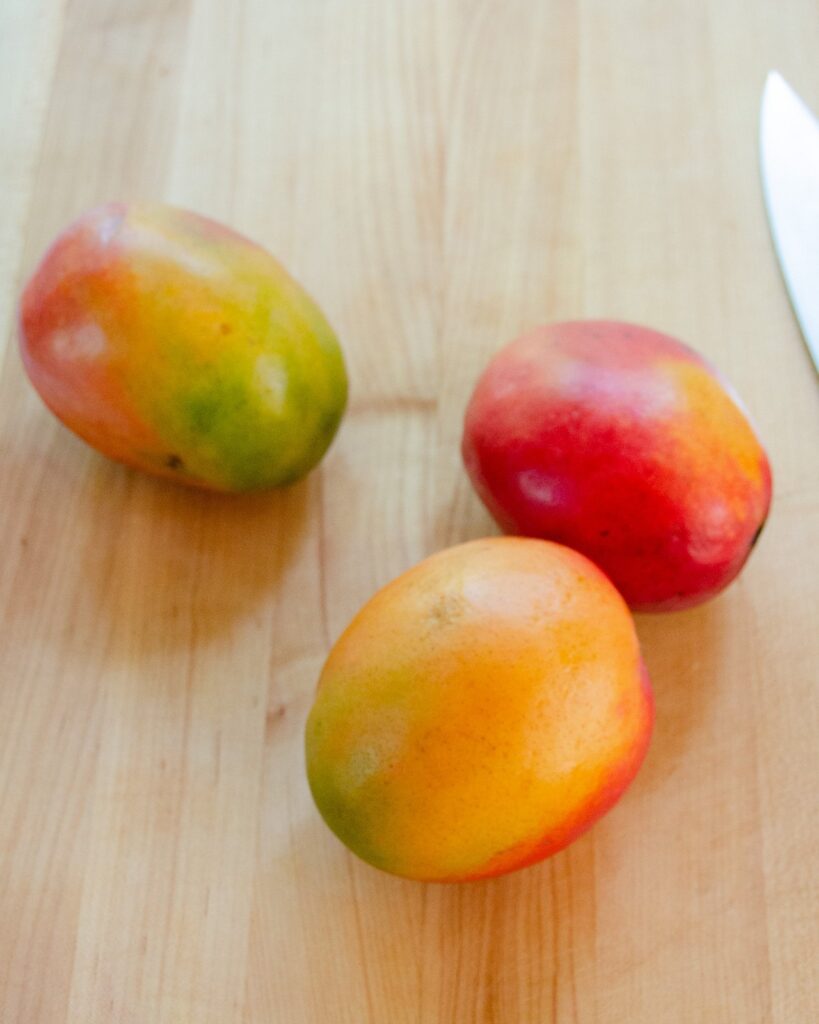
How to store
Mangoes are similar to avocados when you buy them in that they are usually shipped to stores underripe. Just as with avocado, you should buy a mango several days before you plan on eating it, knowing it will ripen in your fruit bowl at home. Unless you’re trying to slow down the ripening of a mango, leave it at room temperature. If it is already ripe and you want to prevent it from over-ripening, store it in your refrigerator. You can even cube and freeze mango for use at a later date.
Types of mangoes
There are hundreds of different varieties of mangoes in the world, but we usually just see a few different kinds in our grocery stores.
- Ataulfo or Honey Mangoes are small and flattened oval in shape with yellow skin and firm yellow flesh. They have a small seed (better ratio of flesh to seed) and are available March through June.
- Haden Mangoes are medium to large in size and have a skin that is bright red with green or yellow tinges. They are round to oval with firm flesh and are best in March through May.
- Tommy Atkins Mangoes are the most commonly found mango in the United States. Their skin has a dark red color with green and yellow accents and a firm fibrous flesh. Their peak season is in March to July and again in September and October.
How to slice a mango
Start by acknowledging that there is a flat, wide seed inside the mango (even if this is just to yourself in your head) and place the mango up on one of its sides. Place your knife in the middle of the mango as though you were going to cut it in half and then move your knife over ½-inch to one side. Slice down and you should slice right next to the seed inside.
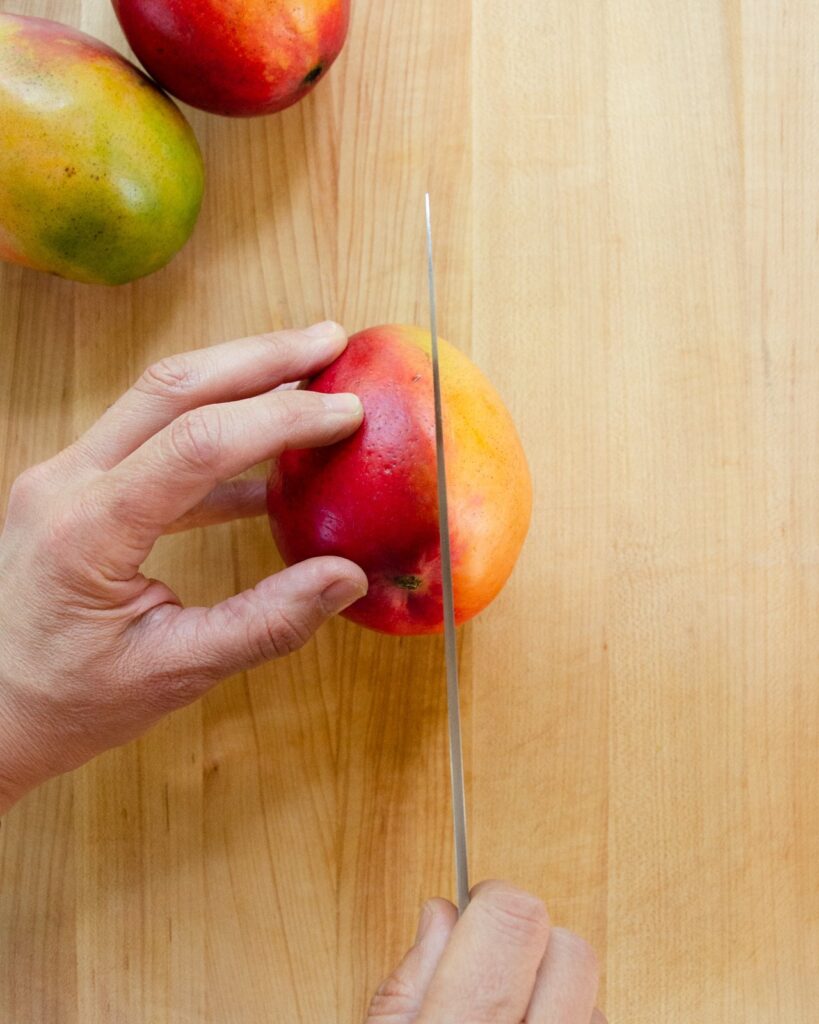
Spin the mango around and slice down the other side of the seed.
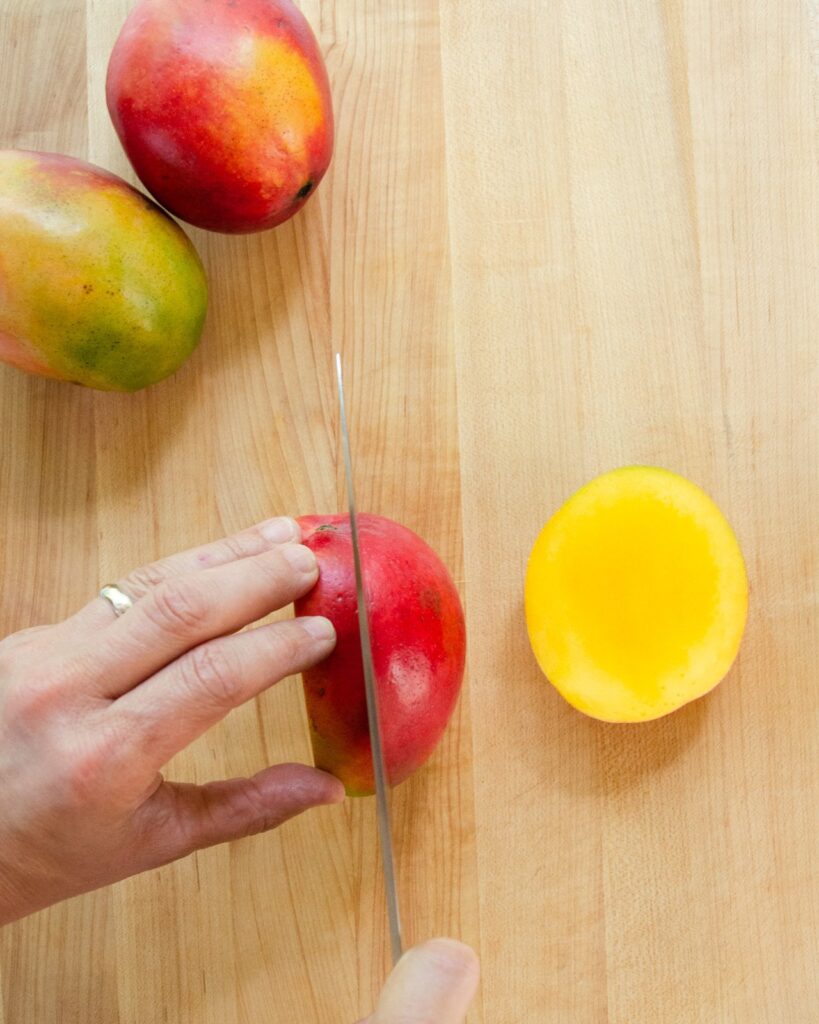
Make slices in the halved mango, but slice into the flesh only and not through the skin.
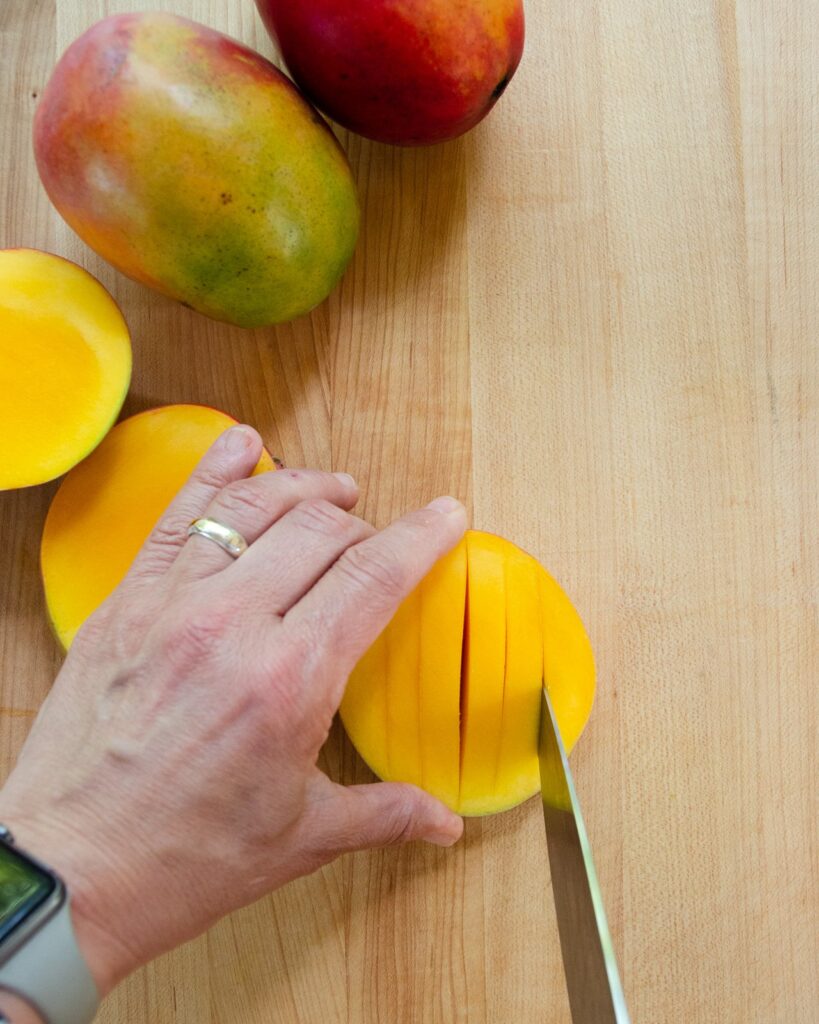
The next step is to cut the slices off the peel. The easiest way to do this is to cut the mango half in half down one of the slices, leaving you with two quarters.
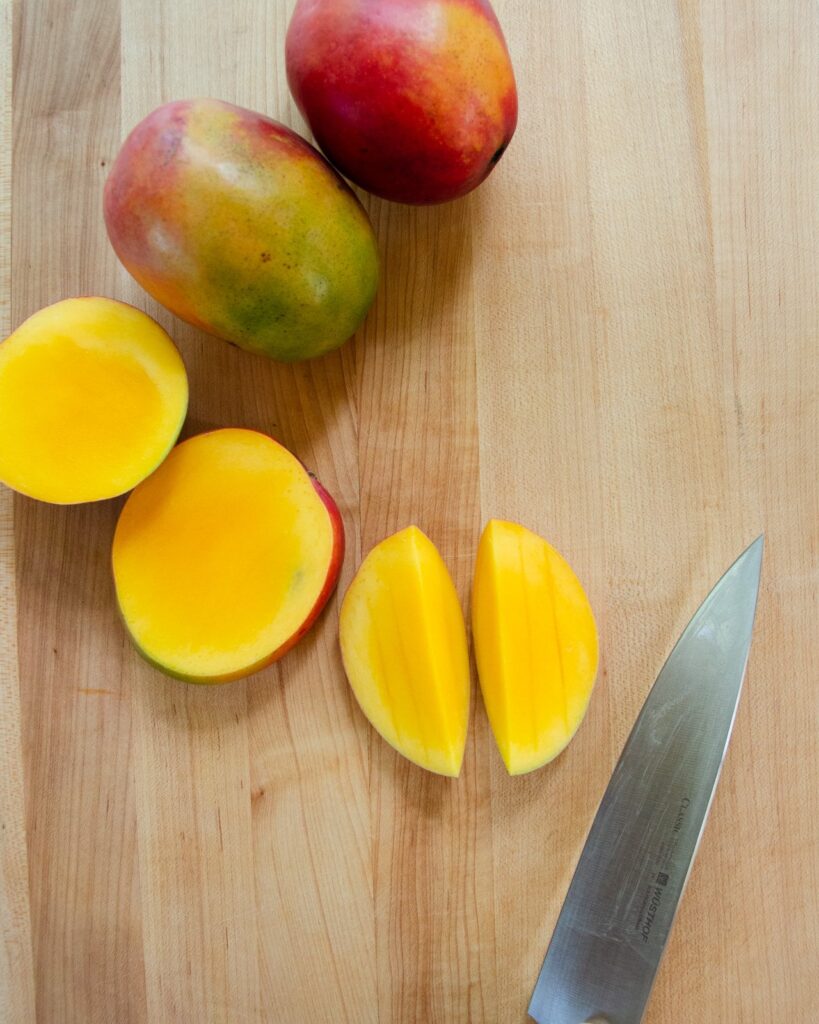
Now run the knife parallel to the cutting board, between the skin and the flesh of the mango, slicing the mango flesh slices off the skin smoothly.
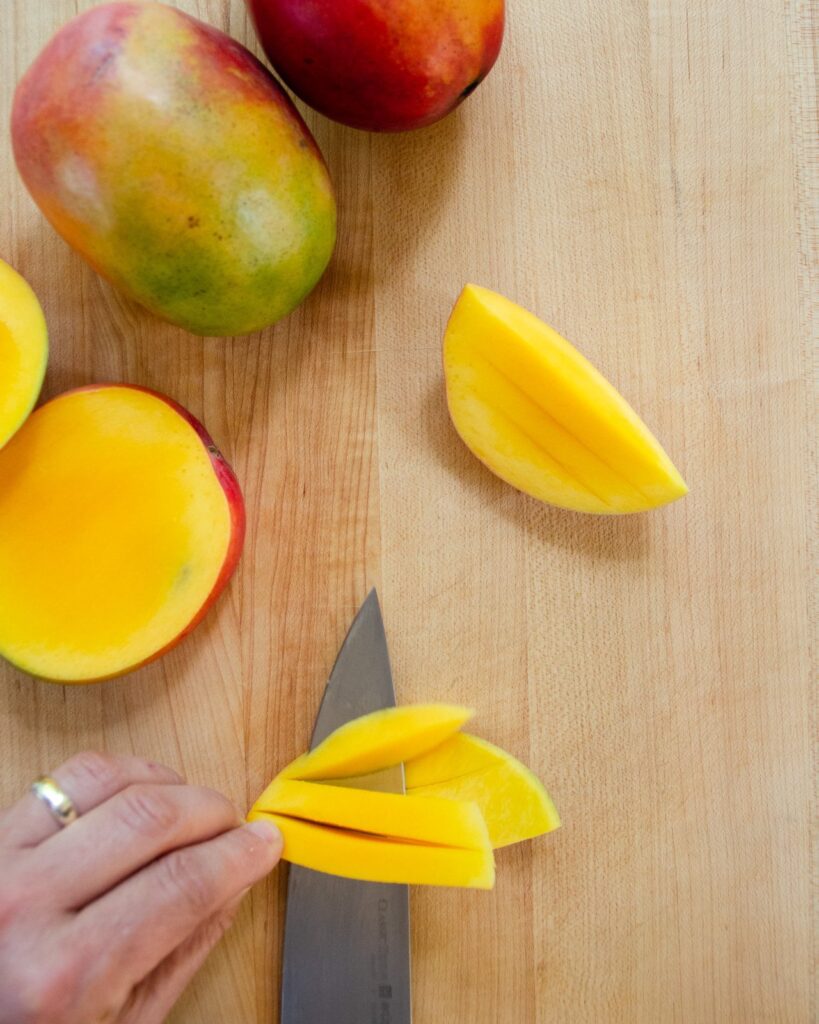
How to dice a mango
Dicing a mango starts exactly the same way as if you were going to slice the mango. Instead of making just one set of cuts into the mango half, spin the mango 90º and make cross hatch slices into the flesh, not piercing the skin.
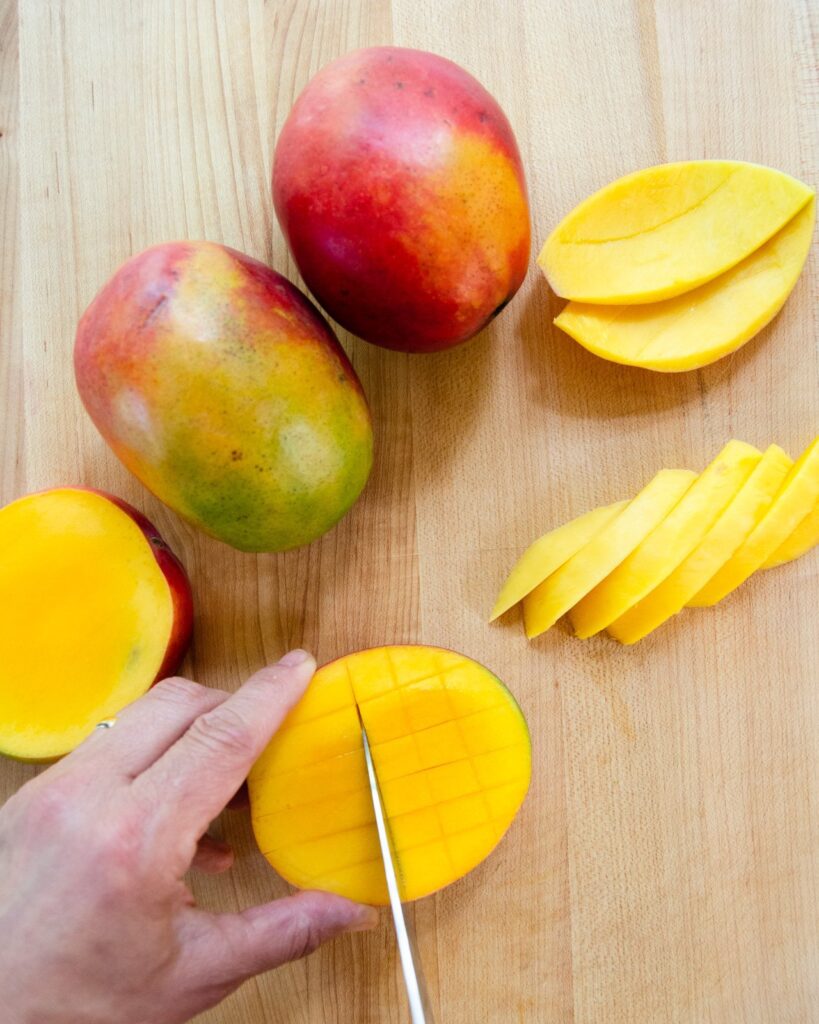
Now you can do as you did when slicing the mango and cut the half in half again before holding your knife parallel to the cutting board and slicing between the flesh and the skin to remove the diced fruit. Or, you can invert the mango half, turning it inside out to expose the dice and then simply cut the dice off the peel.
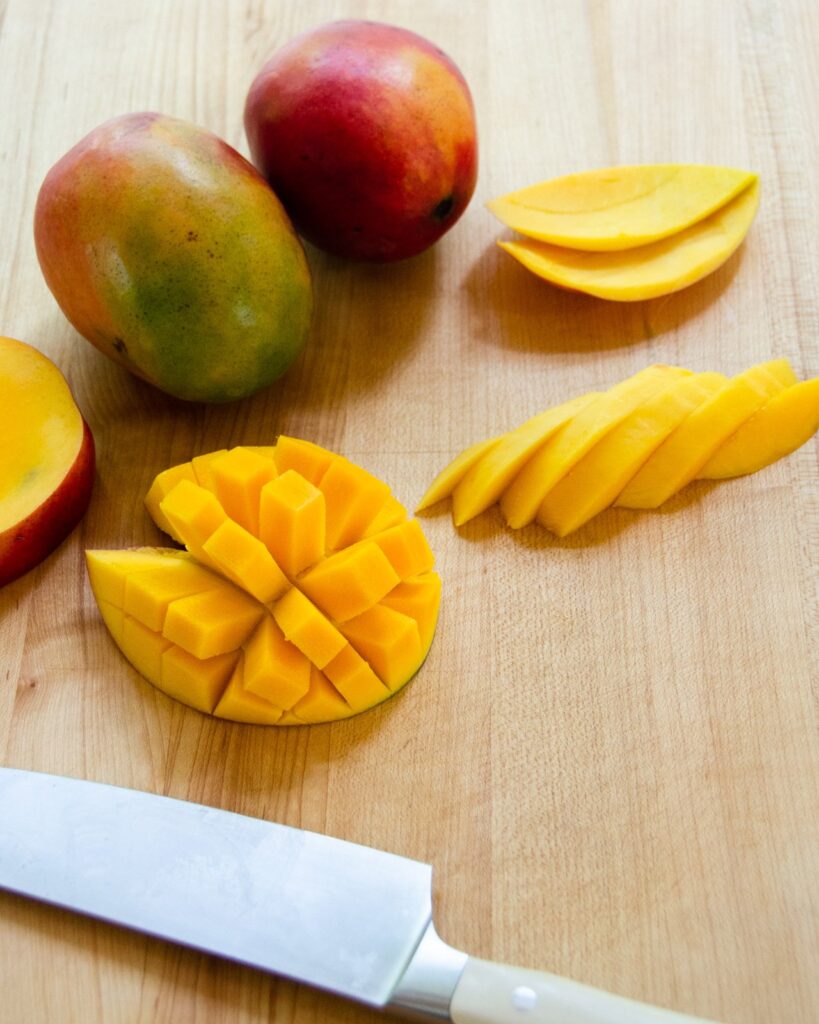
At the very end, don’t ignore the strip of mango flesh around the seed. Slice as close to the seed as possible, curving the knife around the mango to slice off the extra flesh. Then chop the mango as desired, not piercing the skin and slice your knife between the skin and the flesh to cut away the remaining fruit.
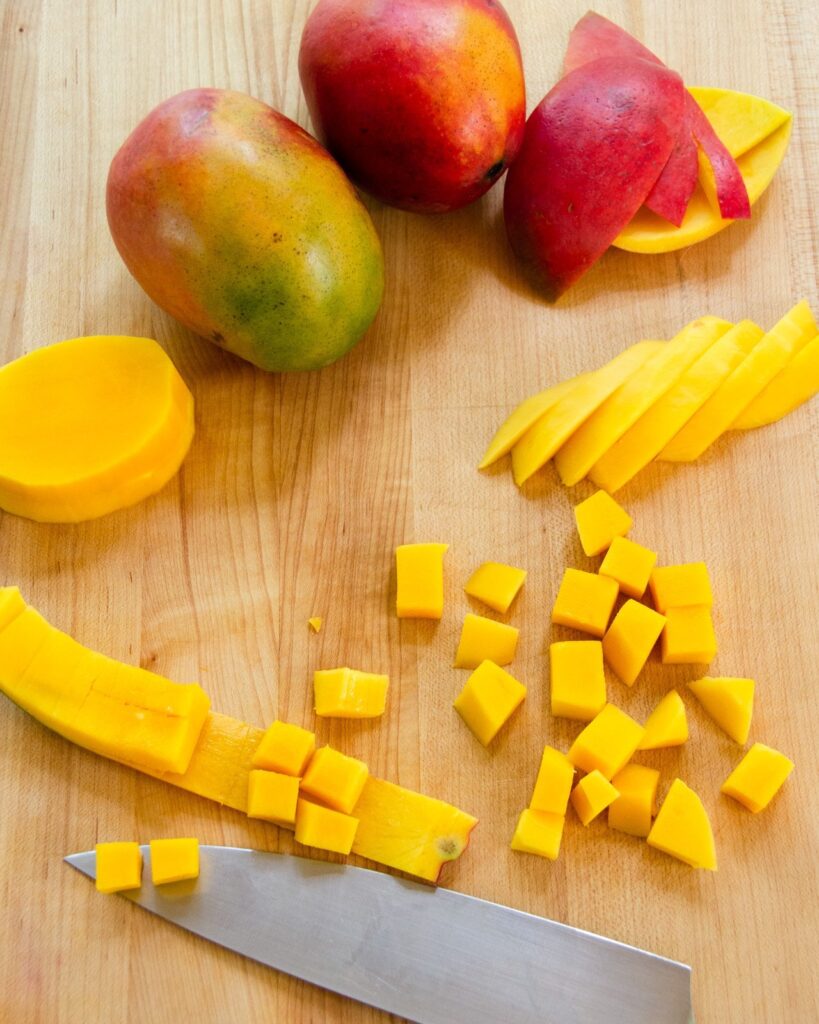
Quick Notes:
- A ripe mango does not have a specific color, but should be slightly tender to a squeeze and just have wrinkles starting to appear.
- Store an underripe mango at room temperature.
- Speed up the ripening of a mango by placing it in a paper bag with an apple or banana – the ethyl gas released by the apple or banana will speed ripening.
- Slow down the ripening of a mango by refrigerating.
- You can cut and freeze mango flesh for use later on.
- There are hundreds of varieties of mangoes in the world, but only a few available to us in grocery stores.
- Ataulfo/Honey – small and yellow; good fruit:seed ratio
- Haden – medium to large; starts out freen, ends with pinklish blush
- Tommy Atkins – medium to large; beautiful red blush; can be stringy and fibrous
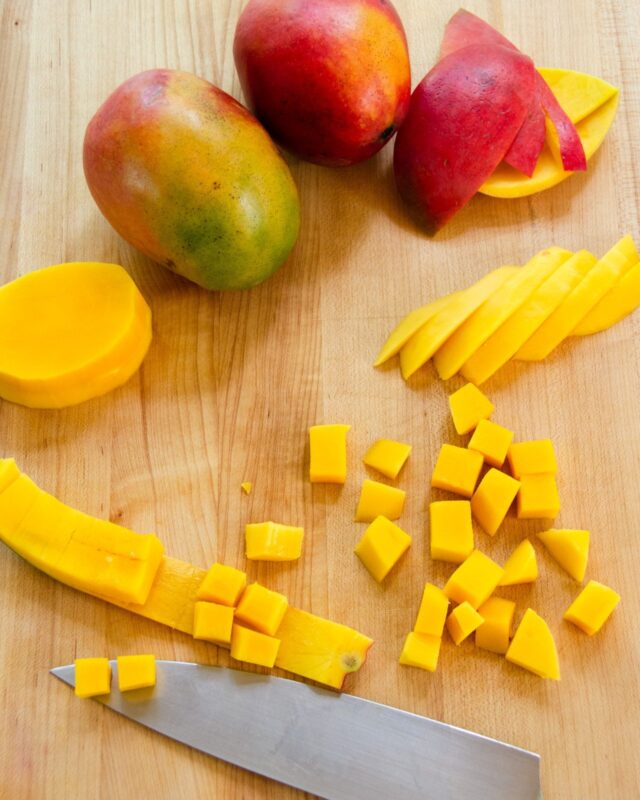
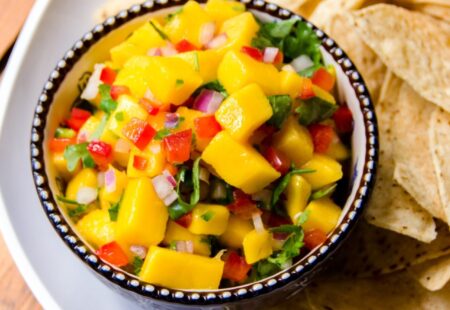
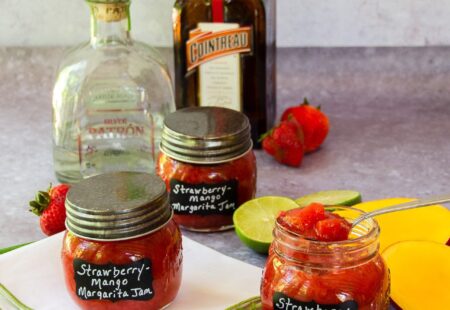

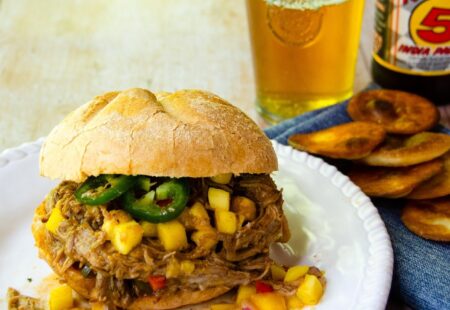
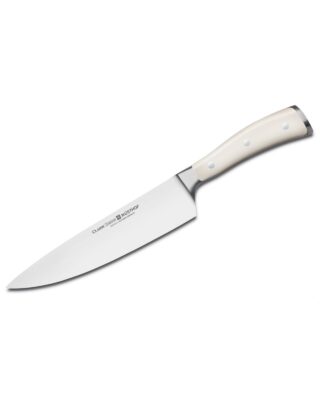
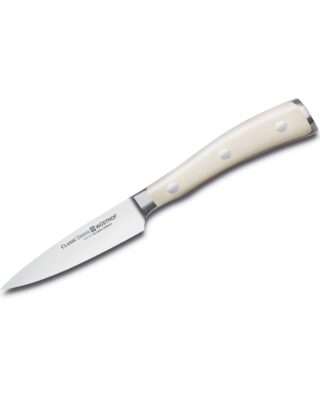
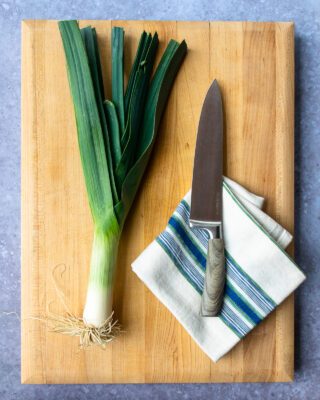
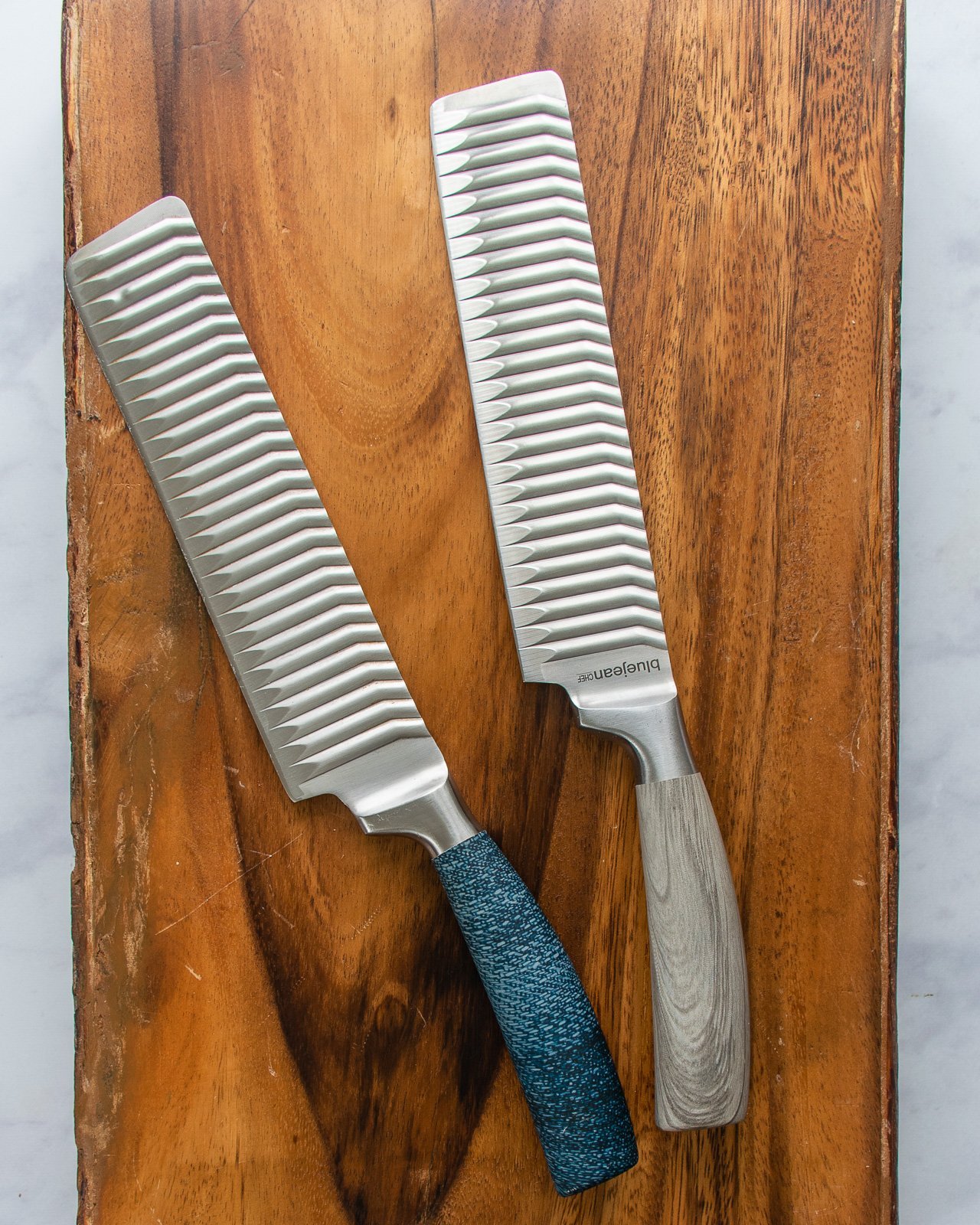

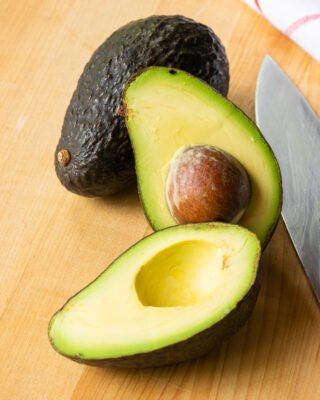
Thanks, never bought one.
I was intimidated. Love your sight. Mango what I’m talking about.
Meredith, I really miss seeing you on QVC! Please think about coming back either to QVC or elsewhere on tv.
😊